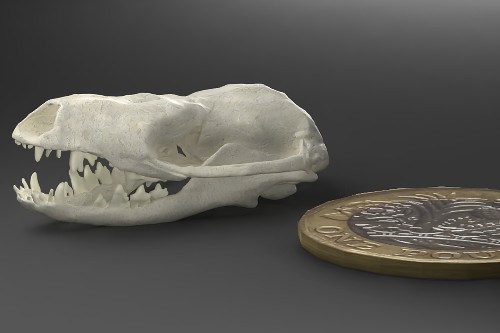A new study, published today in Communications Biology, shows that skull bones were successively reduced in early mammals around 150 to 100 million years ago.
The research further demonstrated that alongside the reduction of skull bones, early mammals also became a lot smaller, some of which had a skull length of only 10-12 mm. This miniaturization considerably restricted the available food sources and early mammals adapted to feeding mostly on insects, allowing them to thrive in the shadows of dinosaurs.
In many vertebrate groups (animals with a back bone), such as fishes and reptiles, the skull and lower jaw are composed of numerous bones. This was also the case in the earliest ancestors of modern mammals over 300 million years ago.
An international team of paleontologists led by Dr Stephan Lautenschlager, Senior Lecturer for Paleobiology at the University of Birmingham along with academics at the University of Bristol including Professor Emily Rayfield, used computer simulations and stress analyses to investigate the purpose of this skull simplification.
The results of the new study show that reducing the number of skull bones did not lead to higher bite forces or increased skull strength as hypothesized for many decades. Instead, the team found that the skull shape of these early mammals redirected stresses during feeding in a more efficient way.
Co-author Professor Rayfield of Bristol’s School of Earth Sciences said: “Using computational simulations of biting in fossils provides a unique insight into the evolution of the mammalian skull.”
“Reducing the number of bones led to a redistribution of stresses in the skull of early mammals,” said Dr Stephan Lautenschlager. “Stress was redirected from the part of the skull housing the brain to the margins of the skull during feeding. This may have allowed for an increase in brain size.”
This combination of small size, reduced number of skull bones and feeding on new food sources, such as insects, allowed the ancestors of modern mammals to prosper while dinosaurs roamed the Earth. However, it was not until dinosaurs became extinct at the end of the Cretaceous 66 million years ago, that mammals had a chance to further diversify and reach the large range of body sizes we see today.

